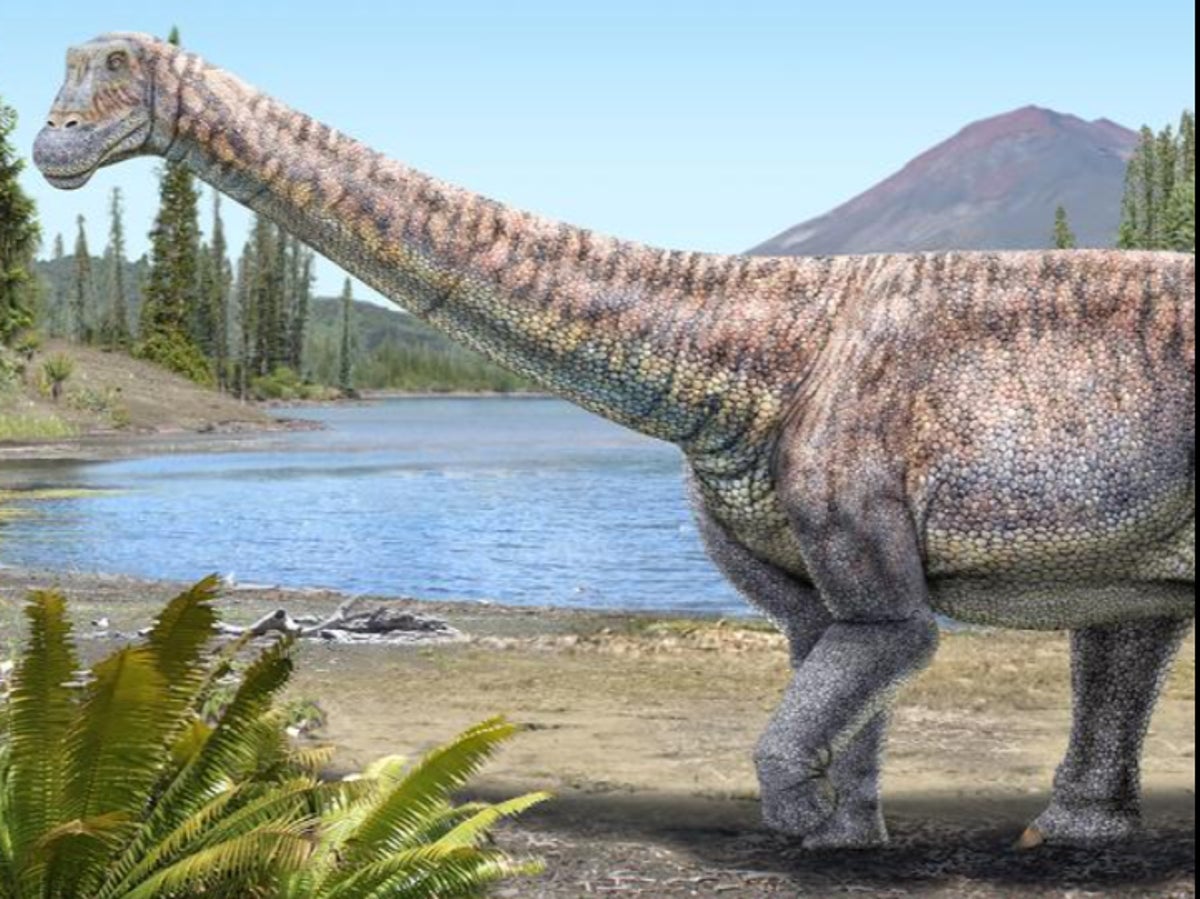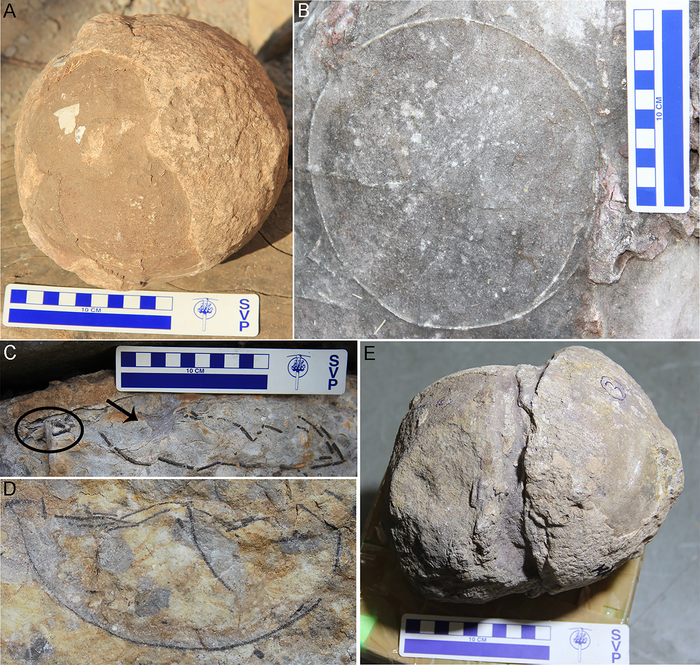
The discovery of over 250 fossilised dinosaur eggs in India suggests the giant prehistoric reptiles may have exhibited nesting behaviour similar to many modern birds.
Scientists, including Harsha Dhiman of the University of Delhi in India, recently uncovered 92 nesting sites in the Narmada Valley of central India that contained a total of 256 fossil eggs belonging to titanosaurs – among the largest dinosaurs to have ever lived.
These fossils, according to the researchers, are from a region well-known for dinosaur skeletons and eggs from the Late Cretaceous Period – a time shortly before the age of dinosaurs came to an end.
The findings, published on Wednesday in the journal PLOS, suggest that these dinosaurs likely buried their eggs in shallow pits like modern-day crocodiles.
Some conditions spotted on the fossils, such as a rare case of an “egg-in-egg”, indicates that these giant dinosaurs had a reproductive physiology similar to that of birds.
Researchers say the titanosaurs possibly laid their eggs in a sequential manner as seen in modern birds.
Due to the close spacing of the nests that left “little room for adult dinosaurs”, scientists suspect the adults may have left the hatchlings to fend for themselves.
On the basis of abundant clutches that were closely spaced and containing similar eggs, researchers say the titanosaurs of the study areas likely adopted for “colonial nesting behaviour” in which each species took up a nest site surrounded by the nests of other similar species.
They believe the data presented in the study can contribute significantly to the understanding of how dinosaurs lived and evolved.
“Our research has revealed the presence of an extensive hatchery of titanosaur sauropod dinosaurs in the study area and offers new insights into the conditions of nest preservation and reproductive strategies of titanosaur sauropod dinosaurs just before they went extinct,” Dr Dhiman said.

“Together with dinosaur nests from Jabalpur in the upper Narmada valley in the east and those from Balasinor in the west, the new nesting sites from Dhar District in Madhya Pradesh (Central India), covering an east-west stretch of about 1000 km, constitute one of the largest dinosaur hatcheries in the world,” Guntupalli VR Prasad, another author of the study, added.







